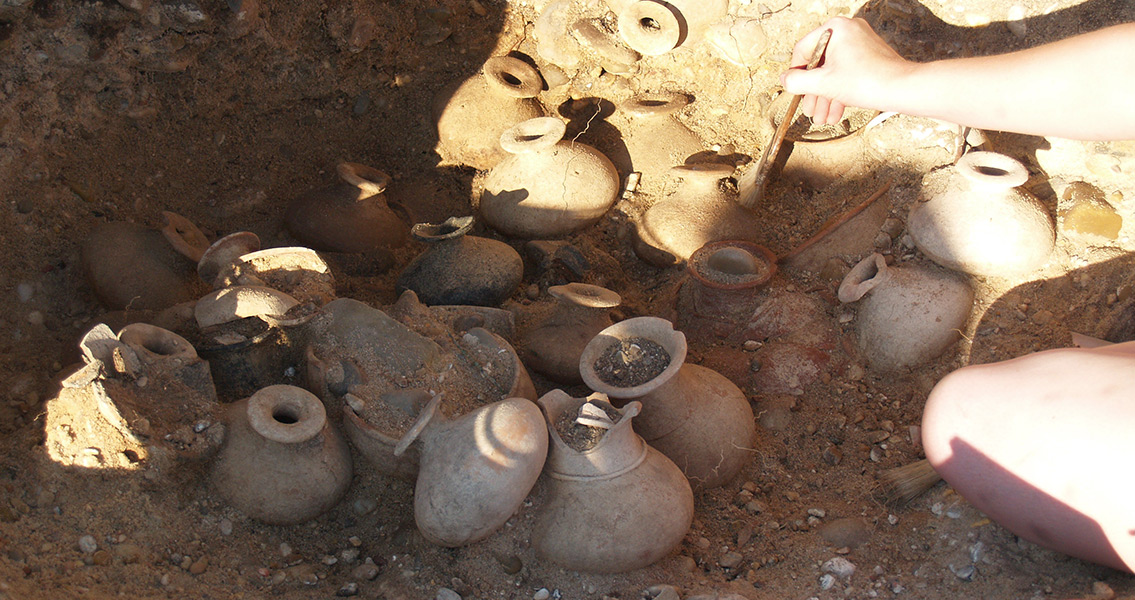<![CDATA[Excavations have unearthed a pre-Roman settlement in Spain. An archaeological site in Pintia, central Spain, has revealed abundant evidence of a civilisation occupying the region before its Roman conquest. The large site measures about 125 hectares and contains evidence which shows human occupation for over a millennium. Several distinct areas of study have already been discovered at the site. The main residential settlement called Las Quintanas is surrounded by a necropolis, an ustrinum or crematorium, a possible sanctuary, and an artisan neighbourhood. In the latter, it was ascertained that the artisans had their own separate residential area, necropolis and pottery workshops. Recently, 2,500 year old burials have been found which provide a glimpse into the Vaccean culture, an Iron Age group who thrived in the area. For centuries the area "was dominated by three cultures: Vaccean, Roman and Visigoth, although the pre-Roman people... were the most important for the area,” stated Carlos Sanz, site director and Professor of Archaeology at the University of Valladolid. “In the past few years the archaeological team has been excavating and restoring the site to shine light on this distant people.” Excavations have uncovered over 150 cremation tombs to date, containing a variety of intriguing grave goods. Funerary jars, daggers, necklaces, children’s toys, knives, tongs, iron grills, broaches, and spear points have all been found in the necropolis at Pintia. These artefacts have allowed Sanz and his colleagues to build up an understanding of Vaccean culture in the area. What they have discovered reveals that the Vaccean people believed in an afterlife and lived in a hierarchical society, led by a warrior oligarchy. The main urban settlement of Las Quintanas, occupying around one third of the entire site, “[had] a well-developed layout with a system of primary and secondary roads. Houses were built of adobe, wood, and mud walls, with straw roofs and floors of compressed earth.” Pintia was first discovered in 1870, when local farmers discovered bones and ancient artefacts and informed local authorities. Modern archaeological researchers began excavating the site in 1979, and the most recent digs have focused on the necropolis and the settlement of Las Quintanas. What has been revealed is the violent changes Pintia underwent between the fourth and seventh Centuries BCE. Recent excavations have unearthed homes with their contents intact. Frozen in time, these discoveries have provided archaeologists with a snapshot into the everyday lives of this little-known people. The team have also discovered that Vaccean domestic activity centred on the hearth. Houses were arranged with complementary areas for storage, food preparation, domestic ovens and textiles. After the brutal Roman conquest of Spain, the town's 1km-long defensive walls were completely destroyed. While under Roman rule, it appears that the settlement at Pintia experienced a period of prolonged peace. Consequently, the archaeological record is unspectacular in comparison with the tumultuous earlier period. Excavations are ongoing, with the next scheduled dig planned for June and July 2015. Hopefully more will be revealed about this intriguing pre-Roman civilisation. For more information: http://archaeospain.com/programs/necropolis-of-celtic-iron-age-pintia/ Image courtesy of Wikimedia commons user: Libertykitty ]]>
Spanish Pre-Roman Culture Revealed
